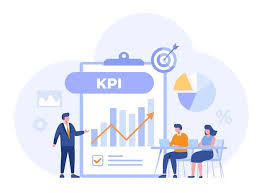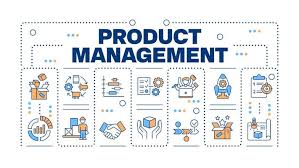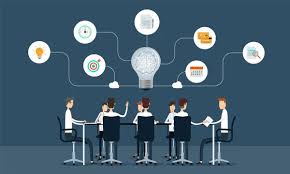Which tools and templates (vulnerability scanners, code-review frameworks) are recommended?
the integrity of your software, from its foundational architecture to the smallest line of code, is paramount. In today's dynamic digital landscape, merely building software isn't enough; you must build it securely, efficiently, and with unwavering quality. This is where the right tools and frameworks become indispensable, proactively safeguarding your applications against performance bottlenecks, scalability issues, and, most critically, security vulnerabilities that can jeopardize trust and lead to costly breaches.
Security code review tools are your first line of defense, offering a proactive way to identify and resolve issues before they impact your business. From static analysis to comprehensive code management, leveraging the right solutions can transform your development lifecycle and ensure continuity.
Fortifying Your Codebase: Essential Vulnerability Scanners
Vulnerability scanners are automated tools designed to examine your application's source code or compiled code to unearth security flaws early in the development cycle. These tools, often categorized under Static Application Security Testing (SAST), employ techniques such as pattern matching, data flow analysis, and rule-based checks to detect common issues like SQL injection, cross-site scripting (XSS), buffer overflows, and hardcoded secrets. By integrating these tools into your Continuous Integration/Continuous Deployment (CI/CD) pipeline, you can automate security checks for each build, preventing insecure code from reaching production.
Here are some of the top-tier solutions recommended for identifying and remediating vulnerabilities:
• Codacy: A versatile tool that automates code reviews, providing actionable insights into code quality, security, and coverage. It supports over 40 coding languages, including Python and PHP, and integrates seamlessly with CI/CD pipelines, offering real-time feedback and customizable analysis rules.
• SonarQube: An open-source platform renowned for its comprehensive code quality and security analysis. It supports multiple languages, provides real-time feedback through IDE integrations like SonarLint, and features quality gates that can block deployments failing specific criteria. SonarQube helps improve overall code health by identifying bugs, code smells, and security vulnerabilities.
• Snyk Code: Specializes in identifying vulnerabilities in both custom and open-source code, leveraging AI-powered automated code scanning for real-time feedback within IDEs. It prioritizes risks with detailed scoring and integrates with popular DevOps tools, making it excellent for early security risk detection. Snyk also offers broad language coverage and fix suggestions.
• Checkmarx: Offers a highly flexible SAST solution that detects vulnerabilities such as SQL injection and XSS early in development. Its integration capabilities with CI/CD pipelines and support for customizable scanning rules make it a reliable choice for secure coding practices. Checkmarx provides a unified platform for multiple scan types.
• Veracode: Combines static and dynamic analysis for thorough application security assessments through its cloud-based platform. It offers actionable remediation insights and integrates with development tools, aiding in vulnerability resolution without workflow disruption. Veracode is known for its wide language support and policy governance features.
• Fortify Static Code Analyzer (Fortify SCA): Excels at detecting vulnerabilities across large codebases, supporting multiple languages and customizable rules. It integrates into CI/CD pipelines and includes an extensive system supporting 1,657 vulnerability categories.
• Semgrep: A lightweight and customizable SAST tool that allows developers to easily create and apply custom security rules. It supports over 30 programming languages and integrates into CI/CD workflows, providing flexibility and speed in vulnerability detection. Its ease of custom rules and speed make it highly developer-friendly.
• Klocwork: Provides detailed static analysis, focusing on vulnerabilities like memory leaks and concurrency issues. Its compliance with industry standards, such as MISRA, makes it suitable for safety-critical environments like automotive and aerospace.
• DeepSource: Offers automated code quality and security fixes, enhancing developer productivity across the SDLC. It integrates with repositories like GitHub and GitLab, convenient for multi-project teams.
• Coverity: Specializes in finding vulnerabilities in C++, Java, and Python, analyzing both source code and binaries for comprehensive application security. It's notable for its high precision analysis and support for open-source projects via Coverity Scan.
• Aikido Security: An all-in-one application security platform combining multiple scanning capabilities, including SAST, secret detection, SCA, DAST, container scanning, and Infrastructure-as-Code (IaC) checks. It's designed for developers, aiming for near-zero false positives and seamless workflow integration, including AI auto-fixes.
• GitHub CodeQL: The analysis engine powering GitHub's code scanning, allowing users to write queries to find patterns in code. It is free for open-source projects on GitHub and widely used for vulnerability hunting.
• Infer (Meta): An open-source static analyzer from Meta (formerly Facebook) that focuses on bug detection (like null pointer dereferences, memory leaks) as much as security. It's strong on mobile and systems code.
• ShiftLeft (now Qwiet.ai): A developer-first tool known for ultra-fast scanning and immediate feedback, integrating into CI/CD pipelines and providing targeted, low-noise results.
Code Review and Technical Documentation Frameworks
Beyond automated scanners, established frameworks and tools facilitate robust code quality and technical documentation:
• Coding Standards and Best Practices: Adhering to consistent coding standards, reusability, and modularity are crucial for code quality and maintainability. This helps reduce technical debt—poorly written, overly complex, or outdated code that can accumulate from rushed development or lack of adherence to standards.
• Architectural Decision Records (ADRs): These are documents that capture important architectural decisions, their context, and consequences. ADRs facilitate knowledge transfer and provide rationale for future changes.
• Comprehensive Documentation: Technical documentation, encompassing design, development, operation, and maintenance of products or systems, is essential for ensuring quality, safety, and effectiveness. This includes architectural diagrams, deployment processes, security protocols, and data handling policies.
• Document Review Process: A critical step to ensure accuracy, completeness, and consistency of documentation. This process involves:
◦ Self-review: The writer checks for clarity, typos, grammar, and style.
◦ Peer/Editorial Review: Colleagues or subject matter experts review for accuracy, completeness, compliance, style, and format.
◦ Technical Review: Focuses on clarity, organization, and consistency, ensuring the document is easy to read and understand.
◦ Compliance Review: A final check to ensure adherence to regulations, standards, and guidelines before publication.
• Documentation Tools/Platforms: Tools like Document360 (a knowledge-based solution) are recommended for distributing training materials, promoting employee information sharing, and tracking knowledge transfer. Cflow is a cloud-based workflow management software that can streamline the technical document review process with automated workflows, centralized document management, and version control.
• Checklists and Templates: Standardized checklists and knowledge transfer roadmaps are crucial for covering all critical areas during transitions and ensuring consistency in documentation reviews. For technical due diligence, a checklist helps assess infrastructure, software architecture, coding standards, security, dependencies, scalability, and operational processes.
By systematically implementing these vulnerability scanners, adhering to robust code review practices, and maintaining comprehensive, well-reviewed technical documentation, organizations can significantly enhance their software quality, bolster security, and ensure seamless continuity across teams. This proactive approach not only mitigates risks but also lays a strong foundation for sustainable innovation and growth.



















